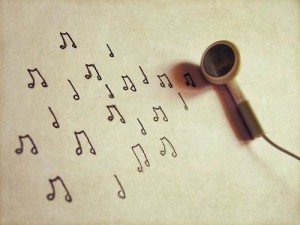
Credit: https://az616578.vo.msecnd.net/
There are many benefits in listening to the repertoire you are working on, on disc and in concert, as well as “listening around” the music – works from the same period by the same composer, and works by his/her contemporaries. Such listening gives us a clearer sense of the composer’s individual soundworld and an understanding of how aspects such as orchestral writing or string quartet textures are presented in piano music, for example. You are unlikely to pick up any nuggets of technique in the concert hall – you’re often too far away from the stage to see details – but listening attentively is helpful. Keep ears and mind alert to details such as articulation, phrasing and breathing space, dynamic shading and nuance, wit and humour, giving rests their full value (or slightly more) to create drama, tempo, and a sense of the overall architecture and narrative of the piece. We should never seek to copy what we hear, but there is much to be learned from this kind of focused listening and I regularly come away from concerts of music I am working on with new ideas and insights.
Conversely, hearing a performance which I may dislike is never a waste of time. When I heard Andras Schiff perform Schubert’s penultimate piano sonata (in A, D959), a work with which I have spent a long time in recent years, I found myself balking at certain things he did to the music – not that anything was “wrong”, it was simply not to my taste. But one thing I took away from that performance was his pedantic treatment of rests in the first movement (Schubert uses rests to create drama, rhythmic drive and moments of suspension or repose) and this definitely informed my practising when I next went to the piano to work on the sonata.
In broader terms, hearing a group of pieces in performance is instructive in demonstrating how a good (or bad!) programme is put together. At one time, performers were concerned with things like key relationships between pieces, but now a programme that “works” tends to be one which contains a variety of contrasting moods, tempi and characters which help to create flow from the start of the concert to the end. Audiences – and performers – enjoy different levels of energy within a programme, while a programme with too many longeurs can seem overly long or just dull.
Most of us are limited by our own imagination, experience and knowledge and great performances and interpretations can broaden our horizons, inspire us and inform our own approach to our music. But listening at concerts, and particularly to recordings and YouTube clips does have its pitfalls too. Recorded performances capture a moment in time and while they can certainly inform our playing, they can also become embedded in our memory and may influence our sense of a piece or obscure our own original thoughts about the music. This may lead us to imitate a magical moment that another performer has found in a note or a phrase – a moment over which that particular performer has taken ownership which in someone else’s hands may sound contrived or unconvincing. It is important that we form our own special relationship with our music, and in order to do that we must invest time and effort in our study, while remaining open-minded and receptive to new ideas or approaches.
The other problem with recordings is that some performers may take liberties with the score to make certain passages or an entire piece more personal. This tends to happen in very well known repertoire, where an artist will put their own mark on the music to make it their own, while not always remaining completely faithful to the score. They might take liberties with tempo or dynamics to create a certain “personal” effect. Thus, some recordings may not truly represent what the composer intended, yet these recordings have become the benchmark or “correct” version.
So when we listen we should do so with an advisory note to self: that recordings and YouTube clips can be helpful, but we should never seek to imitate what we hear. It is the work we do ourselves on our music which is most important, going through the score to understand what makes it special, and listening around the music to gain a deeper understanding of the composer’s intentions so that our own interpretation is both personal and faithful.




